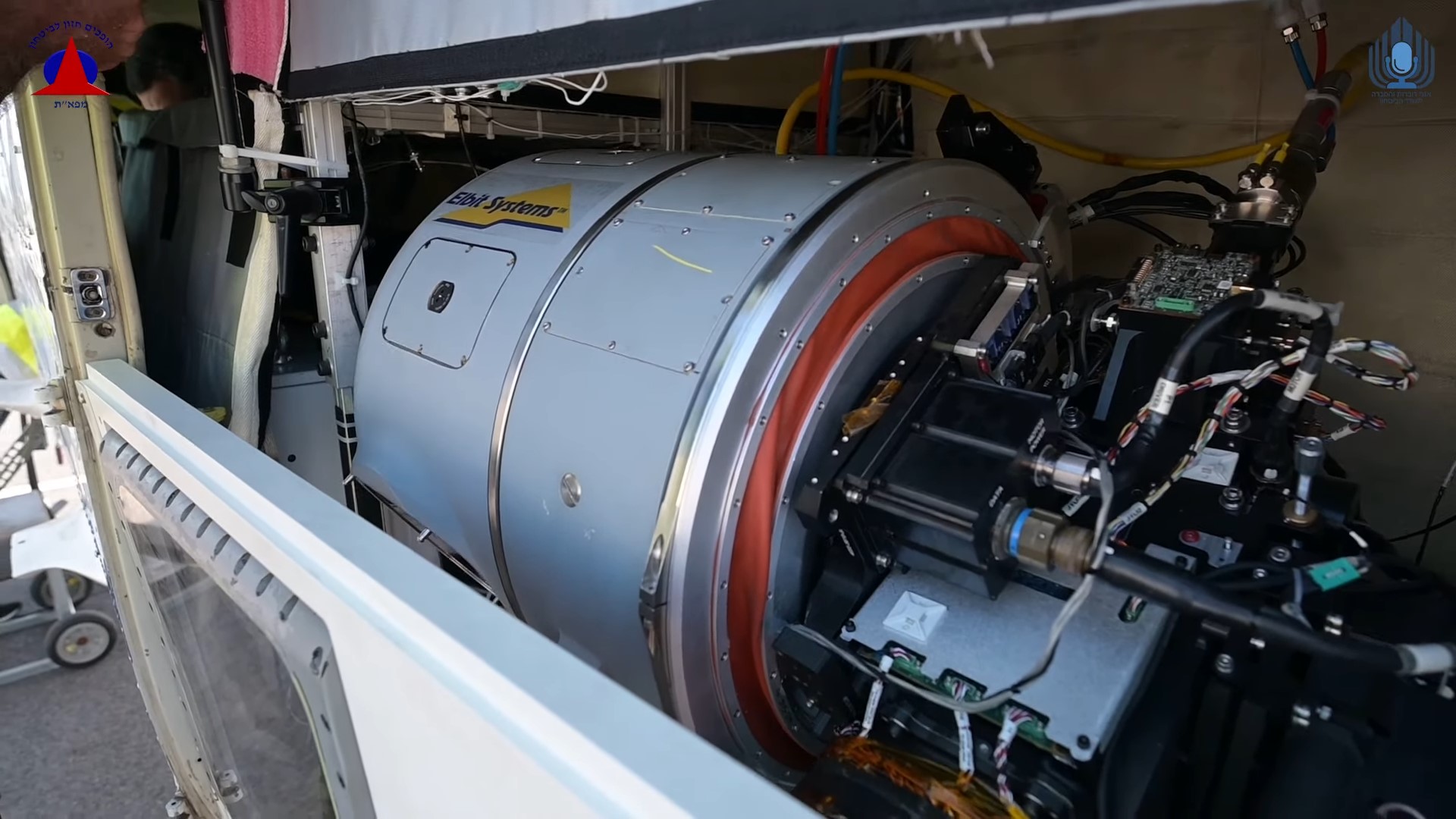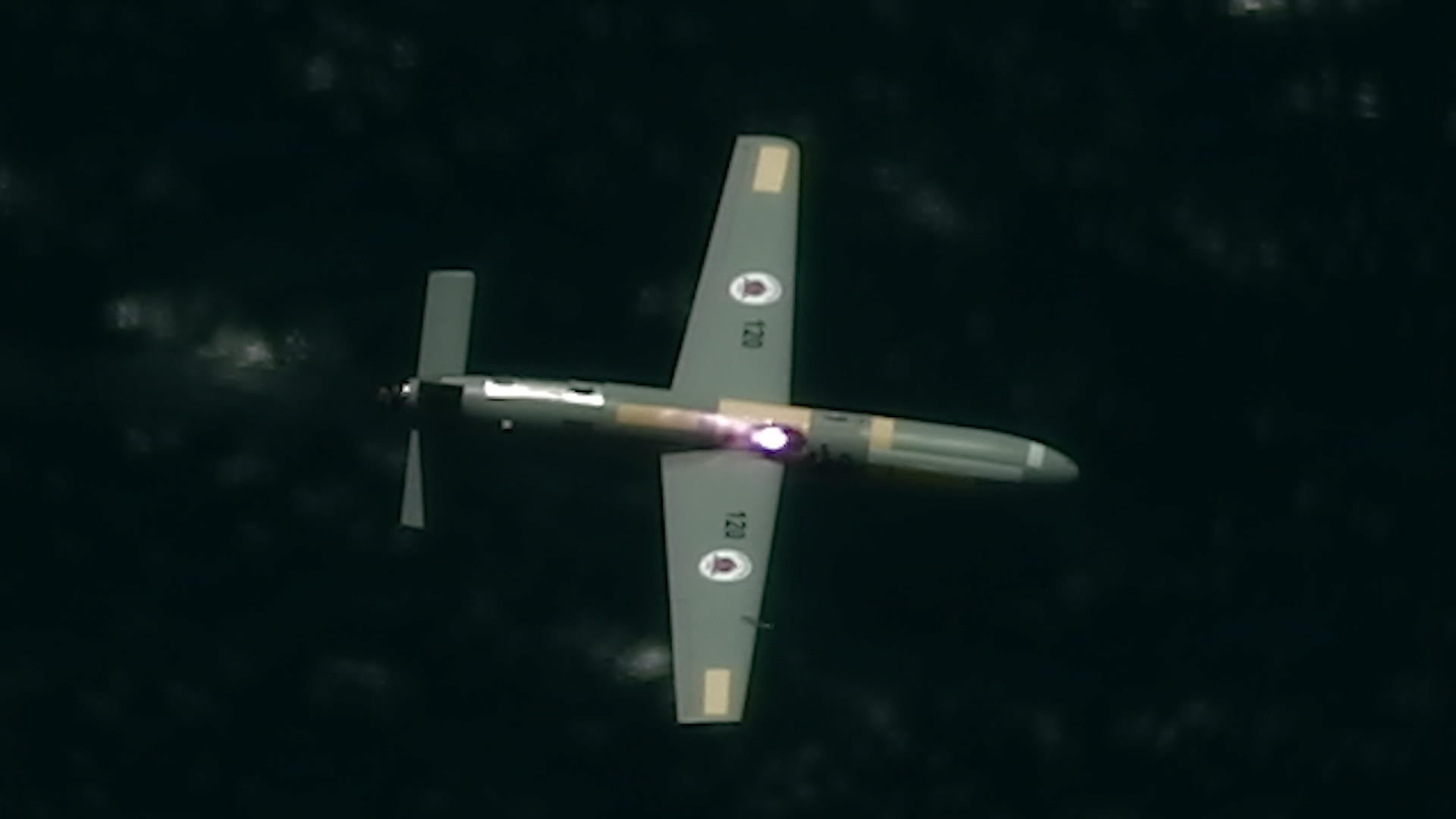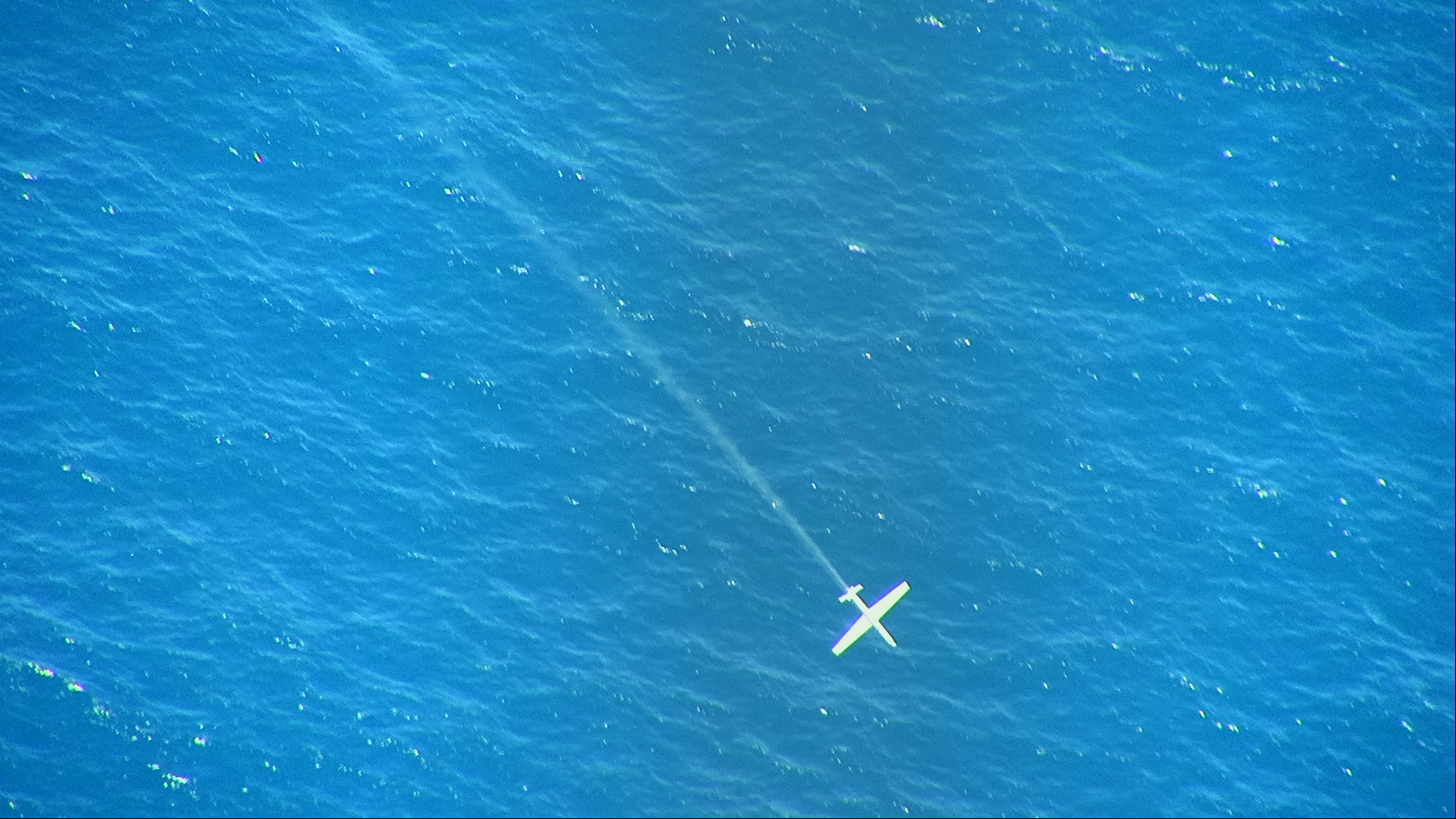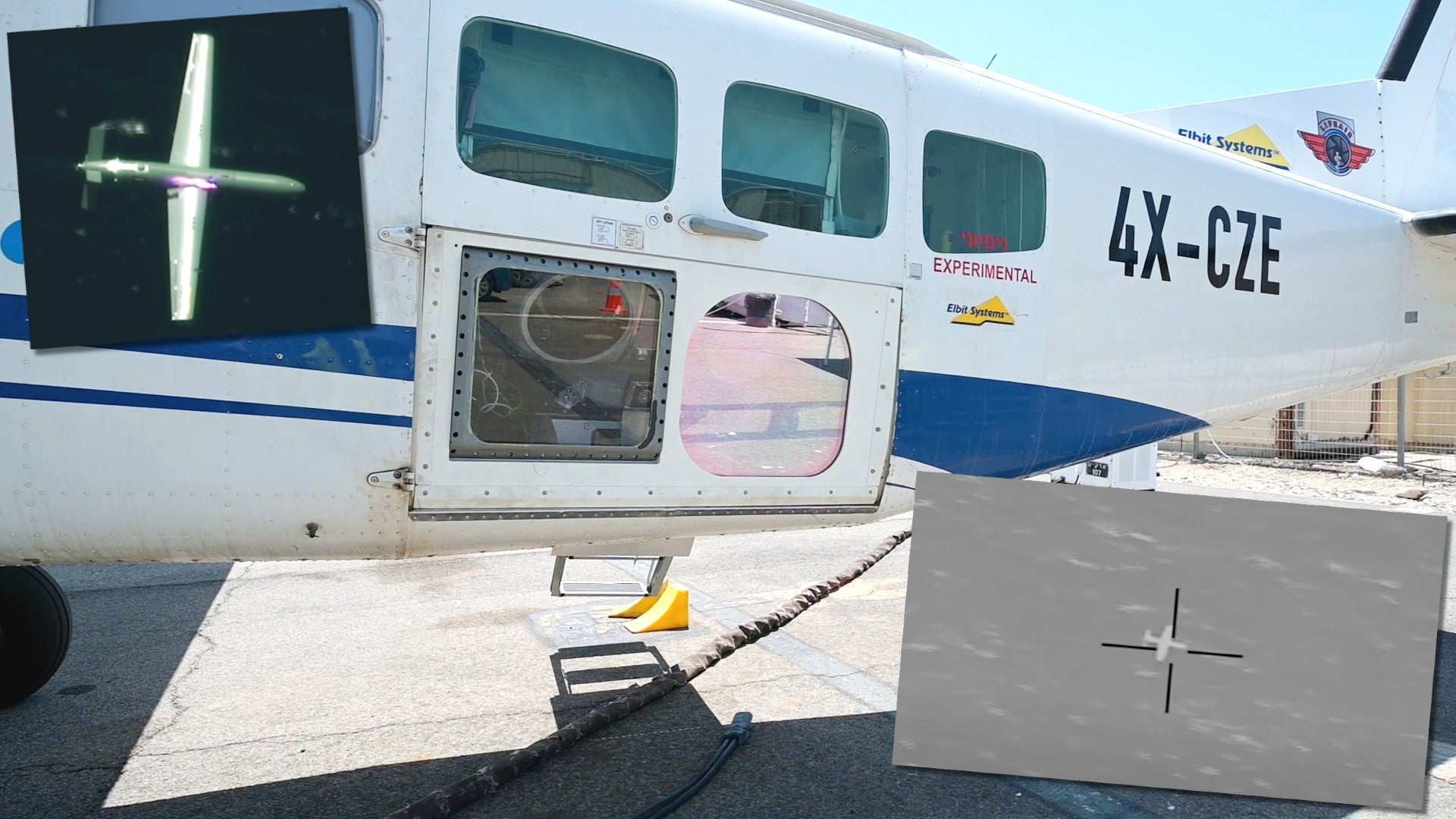Israel’s Ministry of Defense announced today that it successfully intercepted multiple drones during a test of an airborne high-power laser weapon. The demonstrated system is being hailed as “a strategic change in the air defense capabilities of the State of Israel” and could potentially add a vital capability to Israel’s multi-layered integrated air defense system. While the new high-power laser has been tested against UAVs, statements made by officials involved with the demonstration show that the system is also intended to defend against rocket attacks.
The demonstration was carried out by the Israeli Air Force’s (IAF) “Yanat” missile test unit, Israel’s Directorate of Defense Research and Development (DDR&D), and Israeli defense contractor Elbit Systems. A press release accompanying the announcement states that multiple unmanned aerial vehicles (UAV) were intercepted and destroyed above a test range using the new airborne laser system. Footage shared online shows the system deployed on a Cessna 208 Caravan behind a windowed panel on the left side of the aircraft’s rear fuselage. Few specifics about the laser system’s capabilities have been released, but DDR&D’s Head of Research and Development, Brig. Gen. Yaniv Rotem, stated that the system successfully intercepted drones at a range of more than 1km.

Airborne laser systems offer advantages over ground-based laser systems due to the fact that they are carried aboard aircraft and therefore can be rapidly moved between locations. This offers added flexibility to respond to UAV threats wherever they might present themselves and provides greater coverage over a much wider area, especially when compared to a stationary system.
An airborne counter-drone system also will be less impacted by atmospheric distortion than its ground-based counterparts. Laser directed energy weapons, in general, have limitations, such as being highly susceptible to atmospheric conditions, clouds, and smoke. As with any weapon system, size, weight, thermal loads, and power also significantly limit how effective they are against various threats or even how broadly they can be deployed on different aircraft. You can read all about these issues in this past piece of ours.
Israel’s new airborne laser system is claimed to be able to “effectively intercept long-range threats at high altitudes regardless of weather conditions,” despite the fact that Israel’s Ministry of Defense has previously stated that laser systems do not work well in inclement weather or through cloud cover. Still, laser systems offer advantages over kinetic interceptors, in that cost-per-intercept is much lower despite the potential for high up-front procurement and research and development costs of the laser systems themselves.

The aforementioned cost per intercept advantage is a significant catalyst in the development of Israel’s new airborne laser defense system. Israel’s Defense Minister Benny Gantz said the demonstration of the new system is “significant both in terms of cost-effectiveness and defense capabilities” and “will add a new layer of protection at greater ranges and in facing a variety of threats – securing the State of Israel while saving the costs of interception.”
While the most recent demonstration saw Israel’s new high-power laser shoot down multiple UAVs only, statements made by those developing the program show that this system could also offer a new tool in Israel’s growing arsenal of rocket defenses. Oren Sabag, General Manager of Elbit Systems Intelligence, Surveillance, Target Acquisition and Reconnaissance (ISTAR) Division, said that “that the use of a high-power laser to carry out low-cost airborne interception of rockets and hostile unmanned aircraft, closer to their launching areas and away from population centers, offers a significant change in Israel’s defense capabilities.”

Last year, Israel’s Ministry of Defense announced an unspecified “technological breakthrough” related to an airborne laser system being developed in conjunction with Elbit Systems. That system was claimed to cost just one dollar per intercept, compared with the “tens of thousands of dollars that each Iron Dome interceptor missile costs.” Israel is looking at developing an array of laser weapons that also includes drone-mounted and ground-based systems.

Israel’s new airborne high-power laser system could complement Israel’s existing multi-tier missile defense network, which includes the Iron Dome, Patriot, David’s Sling, and Arrow surface-to-air missile systems, as well as manned fighters and helicopters. The need for a multi-layered approach for lower-end threats presented itself in recent clashes when continuous mass rocket attacks launched by Palestinian militants tested the Iron Dome’s capabilities by overwhelming it with sheer numbers.
Iron Dome and its Tamir interceptors are claimed to be capable of shooting down drones in addition to rockets and short-range artillery, but it remains unclear how effective that capability is. In the most recent round of clashes, the IDF reported shooting down unmanned aircraft flying out of Gaza, but it’s unknown which defense systems were responsible for those intercepts.
Militants have been increasingly using drones to attack Israel, and these low-end threats continue to present challenges for existing defense systems designed to intercept rockets or missiles that follow more predictable ballistic trajectories. The proliferation of low-end drones capable of carrying out improvised attacks is becoming a worldwide security issue, and even relatively small-scale drones are capable of creating large-scale impact when targeting infrastructure or high-value targets.
One could see how Israel could deploy several more mature versions of this system in the skies above key areas such as Gaza or along the border with Lebanon during a time of crisis, in essence providing anti-drone screening in a very efficient package. Migrating the capability to an unmanned system in the future would likely be ideal, enabling a loitering drone defense system.
It’s also worth considering that one of the key benefits of lasers are they they can, at least in principle, fire indefinitely, so long as they have a sufficient and consistent power supply. This is important when considering questions about whether it is possible to simply overwhelm existing defense systems like Iron Dome. At the same time, each individual laser system can only engage one target at a time, and there could be significant lag between individual engagements depending on how long the high-power laser takes to charge up.
The ongoing development of Israel’s airborne high-power laser system aimed at intercepting and defeating UAV threats demonstrates how crucial anti-drone capabilities have become when it comes to air defense. While airborne laser systems have been developed and tested to varying degrees of success by the U.S. Air Force as far back as the 1980s, Israel is the first to actually deploy a counter-drone laser aboard an aircraft and effectively make it work, at least from what has been publicly disclosed. The latest claims represent a technological triumph for the Israel Defense Forces which will likely influence other air arms around the globe.

What remains to be known is just what exact type of laser system is being used here and what its power output and other limitations are. For the test setup, it clearly has limited field of regard, but that will surely change over time. We also don’t know exactly what concept of operations would be employed operationally for such a system like this. Will organic sensors onboard the aircraft provide initial detection and targeting or will that come from external sources alone? Also, aboard which type of platform will this laser unit see its first operational deployment?
The U.S. Air Force is still slated to deploy its first operational airborne laser on an AC-130 gunship soon, but that system is being eyed more for air-to-ground roles. Meanwhile, a far more ambitious initiative is underway to put a podded laser defensive system on a fighter aircraft. All this is fine and well, but Israel’s approach to provide a counter-drone capability with an airborne laser, something U.S. Navy ships haven’t even received in a truly operation state, is quite intriguing. Although it is worth mentioning that there may be undisclosed work underway in the U.S. that is focusing on developing a similar system.
Still, there are aforementioned challenges that remain. It will be interest to see how the IAF and its research wings overcome these challenges as they try to migrate their airborne laser system into an operational state.
Contact the author: Brett@TheDrive.com
